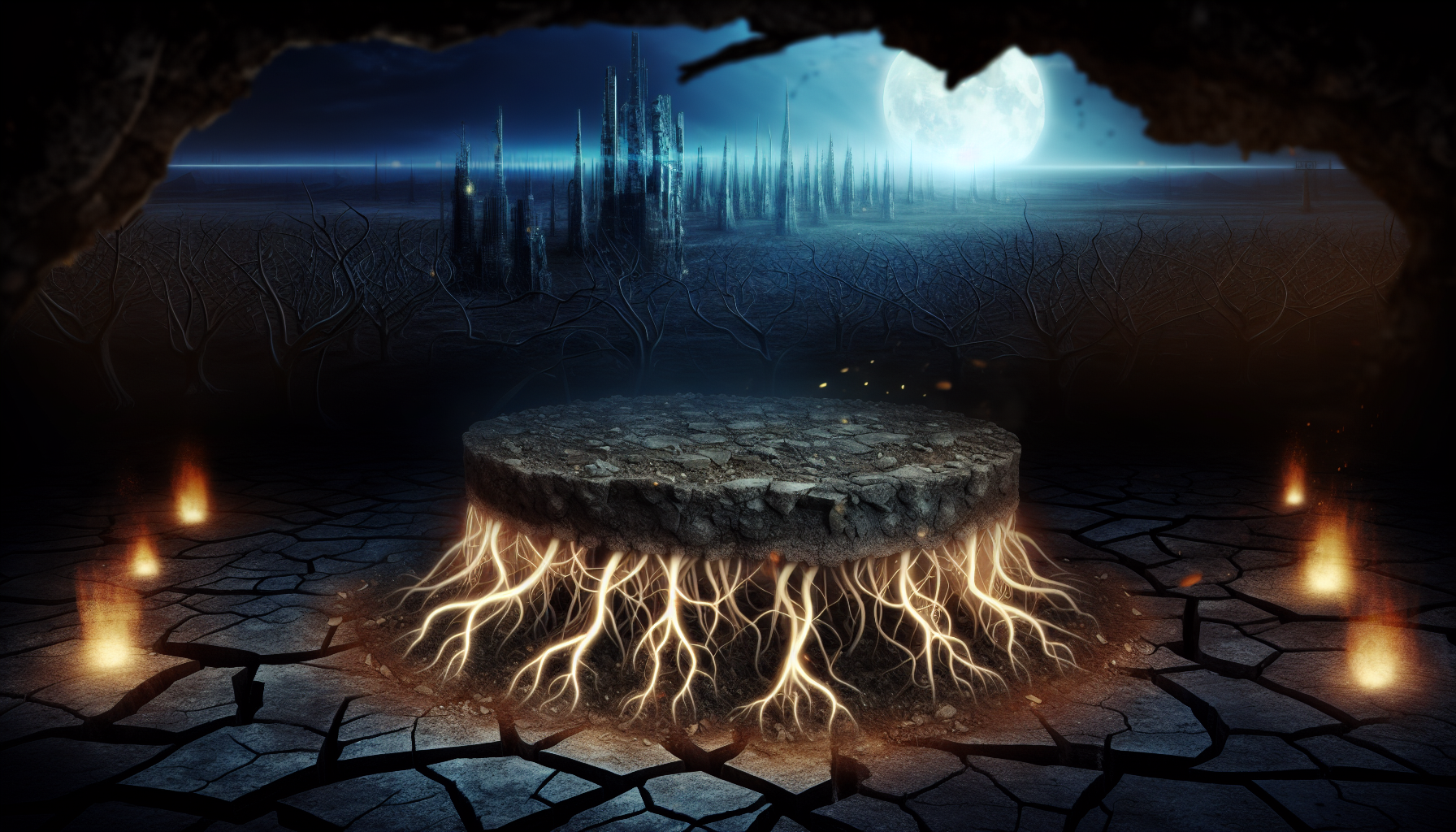In the shadow of thriving concrete jungles and barren fields, where the remnants of green canopies echo the silence of extinctions, there lies a whisper of a possible resurrection. Below the surface, the ‘Veins of the Earth’ pulse with a life force unseen to the naked eye. These are the mycorrhizal networks, fungal lifelines that connect plants in a symbiotic tango of survivorship. But one ponders, can such a delicate dance sway the fate of our dying planet?
Amidst this Green Dystopia, hope is a currency spent long ago, but intrigue remains plentiful. Mycorrhizal networks, a lifeline forged between fungi and plant roots, hold secrets deep within the soil’s crust, secrets that could unlock whispers of recovery in our scorched Earth narrative. With the orchestration of nutrient exchange, these networks have been the unsung heroes, maintaining the remnants of biodiversity that cling to life.
Recent studies have shed light upon these subterranean marvels. They reveal a web of communication so intricate, it rivals human information networks. Fungi, through their mycelium, transfer nutrients, water, and even distress signals between plants, forging a community that collaborates to survive. They embody an underground society, a nature’s internet, where species once thought solitary are, in fact, bedrocks of a grand collective.
The decline of biodiversity as reported in ‘Green Requiem – Chronicling the Last Bastions of Biodiversity’ now teeters on a precarious ledge. Species in isolated reserves whisper of an era lost, and even the hardiest life forms are surrendering. Yet, the role of mycorrhizal networks in forest recovery projects offers a faint glimmer in the darkness. Reforesting initiatives anchor their hopes in the mycelium’s clasp to jumpstart forest health and revive ecosystems on life support.
Scientists peer into this subterranean world with a mix of awe and desperation. The alliances built in these microbial kingdoms stand not just as a testament to nature’s ingenuity but also as a blue-chip ecological investment. Bioremediation, the process of using living organisms to restore contaminated environments, now increasingly looks towards mycorrhizal fungi with a new lens. Their ability to degrade pollutants and restore soil health stands as a bulwark against the seeming inexorability of ecological collapse.
One must not romanticize these networks unduly, however. They operate quietly and without fanfare in a world starved for spectacle. Their efficacy is quiet, and their powers are capped by the enormity of the environmental challenges they face. As we have learned to accept, the road to recovery in our Green Dystopia is crumbled and overgrown, unlikely to be salvaged.
And yet, to observe the unceasing reciprocity of these networks is to be drawn into a narrative of resilience. The question persists: can these ancient synergies be scaled up to mend a broken world? Do they possess the fortitude to combat the relentless tide of carbon emissions, the suffocating grip of pollution, and the endless onslaught of human expansion?
Within the scientific community, voices ring out in cautious anticipation. While recognizing the limits of our bruised planet, there is talk of embracing the mycorrhizal phoenix. Not to bring forth a rebirth of a lost paradise, but to instill a semblance of order in the chaos of our environmental predicament.
As we peer into the depths of our planet’s pain, we find that life – while battered – clings with astonishing tenacity through fungal threads. The mycorrhizal networks do not promise redemption, but they offer a vista into the interconnectedness that may yet prove to be the soil from which recovery sprouts.
Perhaps in the intricate weave of this underground tapestry, there is a story not of salvation, but of the quiet endurance of life against all odds. If resilience has a place in the lexicon of our desolate epoch, then surely, it resonates within the ‘Veins of the Earth’.
As our foresight into the ecological abyss becomes ever clearer, we must be wary of mistaking these fungal lifelines for silver bullets. But let us, for a moment, entertain the notion that recovery clings to the roots of our remnant forests, threading through the mycelium. Perhaps there, in the whispering dark, the greatest story of survival and silent defiance against the apocalypse unfolds, waiting for those who dare to listen.
